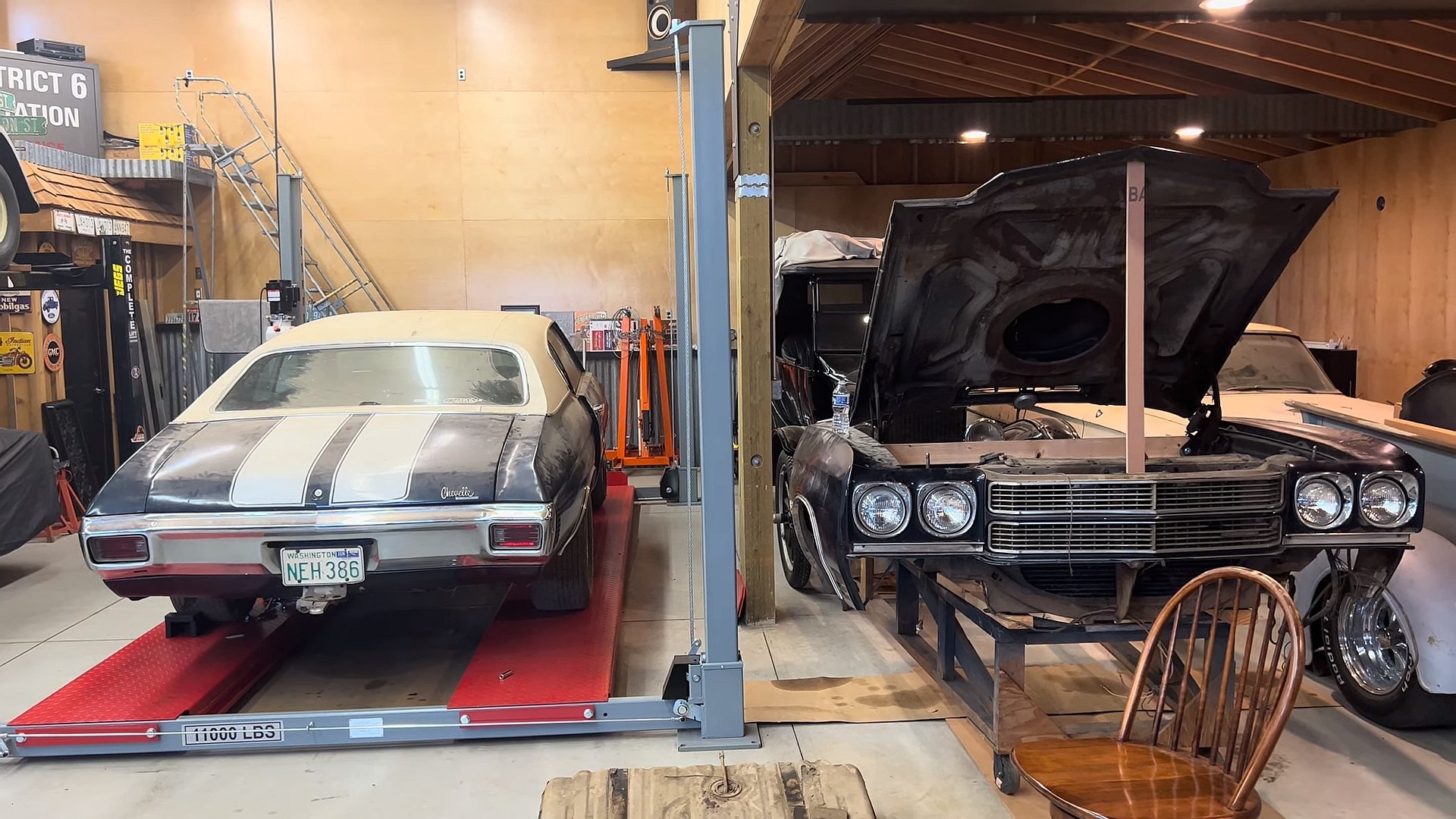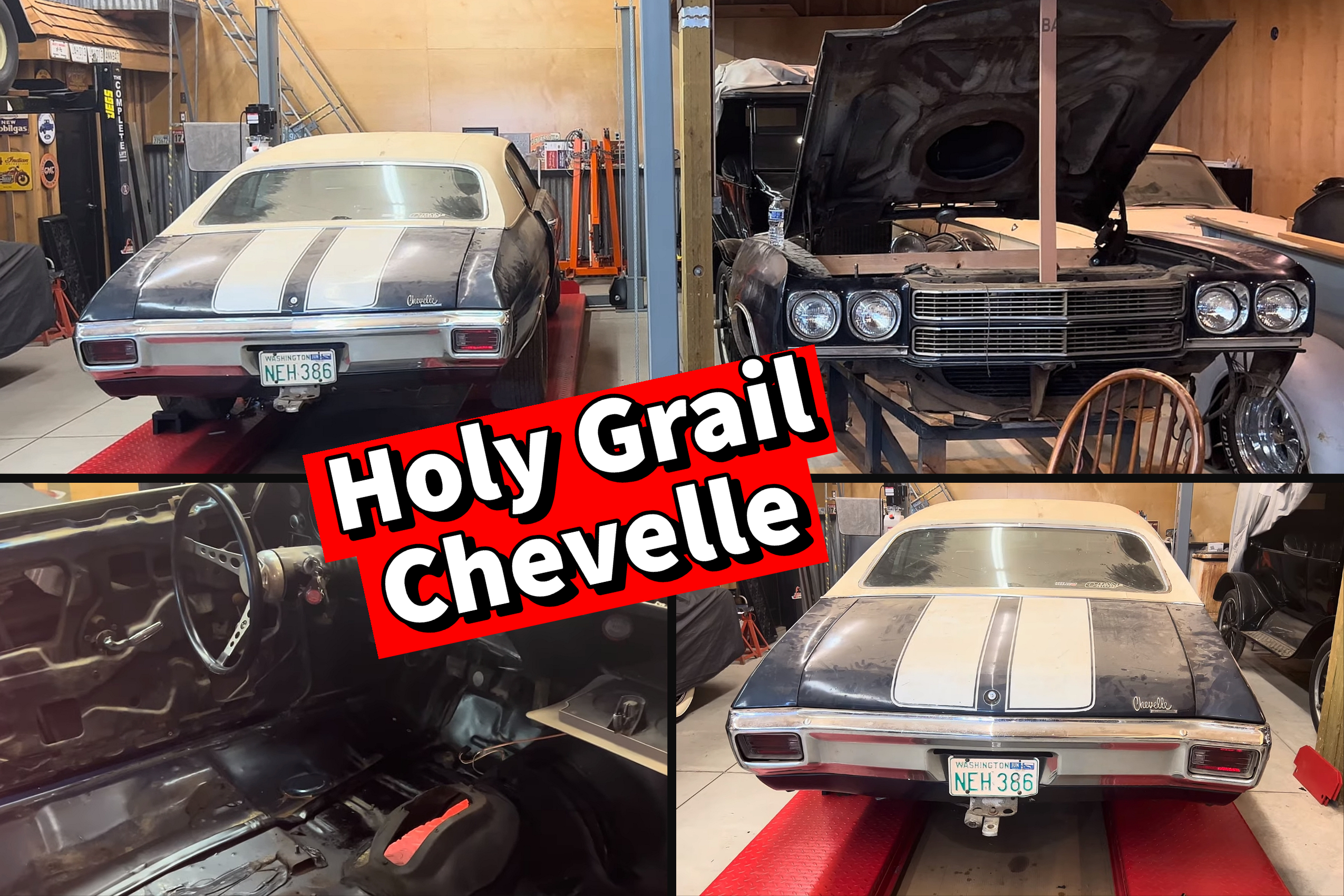In 1962, Ford decided to shrink the Fairlane to a midsize car in response to the AMC Rambler. Plymouth did the same with the Belvedere. General Motors, on the other hand, designed a brand-new platform for intermediate cars. Commonly called the A-body, it found its way into many automobiles in 1963, including the Pontiac GTO, Oldsmobile 442, and the Buick Skylark.
Chevrolet also had access to the platform and created the Chevelle to go against the Fairlane. And the nameplate that started as a volume-seller aimed at the low-priced midsize market quickly morphed into a muscle car contender with the introduction of the SS model in 1964. Chevy took things up a notch in mid-1965 with the Z-16, a bundle that added a 396-cubic-inch (6.5-liter) big-block V8 rated at 375 horsepower into the mix.
But the bow-tie company did stop there. As Detroit-made muscle cars became even more powerful and aggressive toward the end of the decade, Chevrolet answered by dropping a massive 454-cubic-inch (7.4-liter) mill in the Chevelle in the late 1960s. The LS5 wasn’t all that impressive at 360 horsepower, but the LS6 turned the Chevelle into the most potent factory muscle car of its era.

Initially offered in the Corvette, the four-barrel Holley mill generated a whopping 450 horsepower on paper. However, many claim that it was actually capable of more than 500 horsepower as delivered from the factory. Torque was just as impressive at 500 pound-feet (678 Nm) of torque. In all, the LS6 produced about six percent more oomph than a 426 HEMI V8.
The Chevelle SS 454 LS6 turned out to be a one-year wonder. While Chevrolet had planned to keep the mill in production for 1971, only the less powerful LS5 soldiered on for another year. An expensive option at the time, the LS6 was ordered on only 4,475 cars, including Chevelle hardtops and convertibles, as well as the El Camino pickup.
While not as rare as other high-profile muscle cars from the era, the LS6 is highly desirable, and most experts agree that it’s the holy grail of the Chevelle lineup. And they’re sought-after and expensive regardless of condition. Exactly, that includes barn finds and junkyard-found examples too. Or, as is the case here, a car that spent about 50 years in hiding.

Based on the way it looks and the fact that it has more than 100,000 miles (160,934 km) on the odometer, this Chevelle LS6 didn’t actually sit for five decades. However, as Chevelle expert Patrick Glenn Nichols explains, it’s one of those examples that wasn’t documented and included in the national LS6 registry. Up until now, when he was contacted by the third owner for inspection and endorsement.
So what’s the story behind this LS6, and why is it one of the most important Chevelle finds of the year? Well, for starters, the existing cowl tag and partial build sheet (located under the rear seat) confirm it’s an authentic SS 454 LS6. Second, it’s finished in one of the most desirable color combos out there: Fathom Blue paint with white stripes, a white vinyl top, and white bucket seats. It’s also a Kansas City-built car with SS door panels, which, according to Mr. Nichols, is a rare bird.
On the flip side, it’s not one of those unmolested survivors. The car has been repainted once or twice, and some components have been replaced over the years. The vinyl top, the radiator, and the grille, for instance, are no longer original. More importantly, the 454 LS6 engine and the M22 transmission are missing. But even so, it’s a cool find. And the even better news is that the owner plans to restore it.
Granted, finding a date-correct LS6 and M22 gearbox will be tricky and most likely expensive, but it’s not impossible. Once completed, this gorgeous Chevelle will be worth north of $100,000 despite not having a numbers-matching drivetrain.
